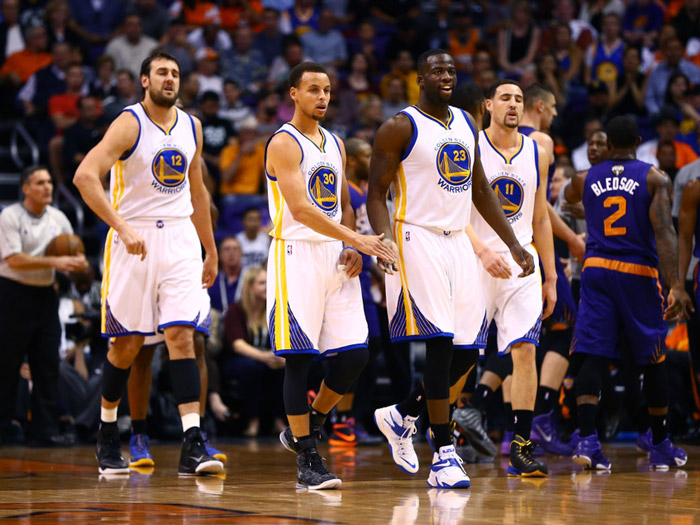[audiotrack title=”The Sport Authority Ep. 2: The evolution of small ball” songwriter=”Aaron Rose” date=”January 12, 2015″ width=”700″ height=”200″ src=”https://24f2041bb5b609d25f1a97039f71682cc9154421.googledrive.com/host/0B9rQxTeDv2duM0FmSjBSYkZFS1k/Sport%20Authority%20episode%202%20small%20ball.wav” autoplay=”on”]
At 35-2 the Golden State Warriors are the best team in the NBA by far. They’re revolutionizing the game in a way never seen before. For decades bigger was better, but now that’s not necessarily the case. Basketball fans are seeing a confluence of two phenomena: A heightened value on the three-point shot and taller players becoming more skilled. In 1999, Dirk Nowitzki transformed the game, becoming the first seven-footer to attempt 300 three-point shots. Now, it seems common place for teams to have their big men shooting outside the paint, sometimes from beyond the 3-point arc. 7’3” rookie Kristaps Porzingis has taken the league by storm, shooting a quarter of his shots from 3-point range.
It is interesting to note, however, that while ‘small ball’ has only become popular recently in the NBA, collegiate teams have been trotting out squads with three or four guards for decades.
Starting in the late 1930s, Princeton basketball Head Coach Franklin “Cappy” Cappon invented the so-called “Princeton Offence.” Unable to recruit the country’s best big-men, Cappon innovatively predicated his offence on having five players who can all pass, shoot, and dribble at a relatively high level. CIS basketball teams have been finding ways to deal with the same issue for decades. After two seasons as the Redmen’s starting small forward,junior Michael Peterkin has moved to the bench as Head Coach Dave DeAverio has elected to play more ‘small ball.’ This podcast talks with both Peterkin and Coach DeAverio about the recent trend and how it has affected the Redmen.
Podcast: Play in new window | Download











